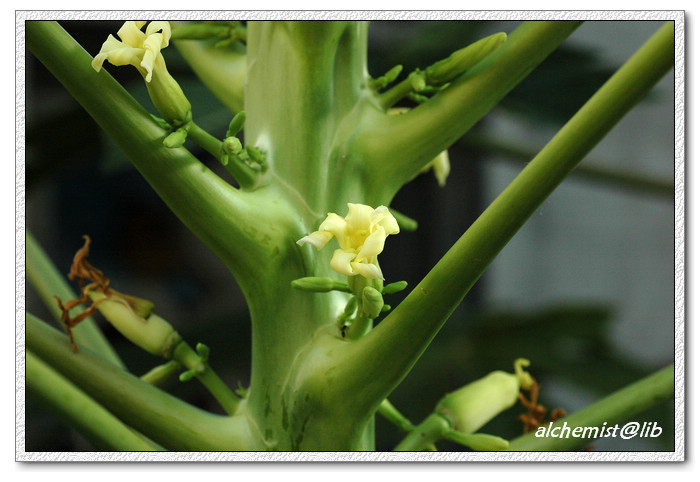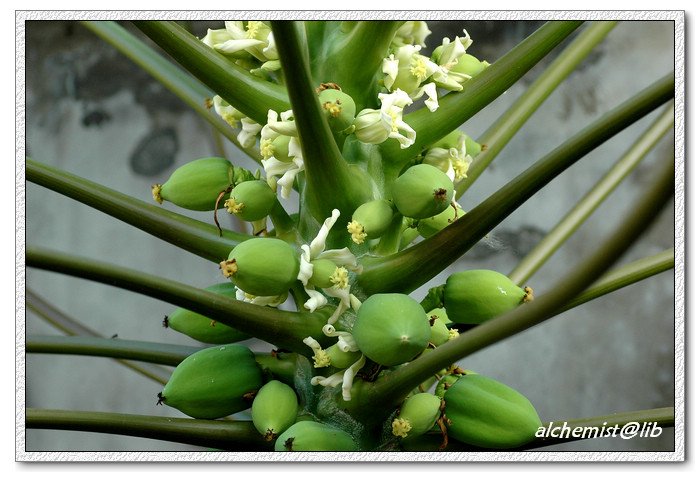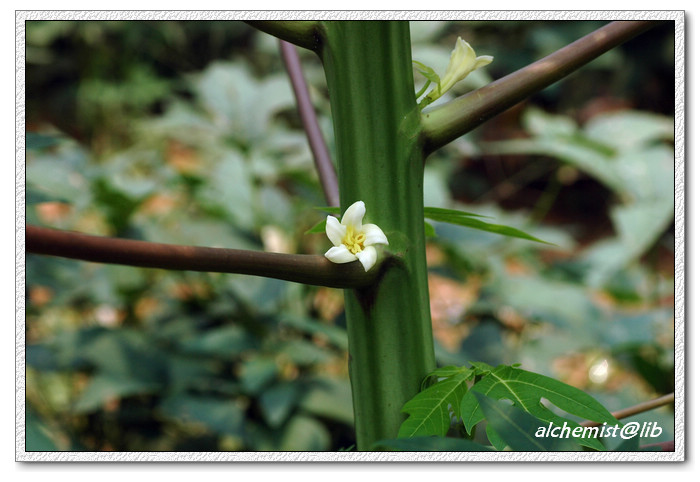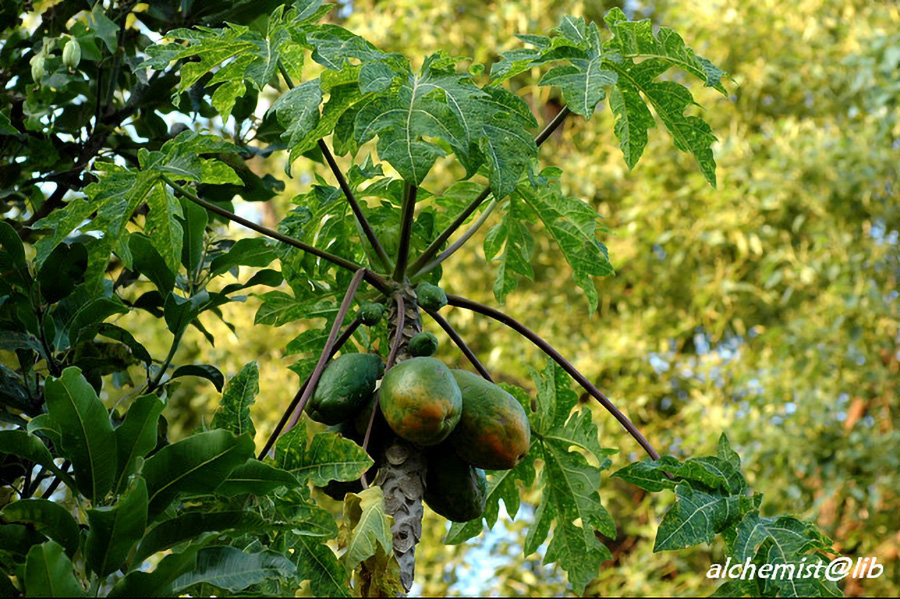番木瓜 Carica papaya
- Scientific Name: Carica papaya L.
- Ref: Sp. Pl. 2:1036. 1753
- English Common Name: papaya
- Chinese Common Name: 番木瓜 fān∙mùguā
- Japanese Common Name: パパイア papaia, パパヤ papaya, マンジュマイ [万寿瓜] manjumai
- Family: Caricaceae
- Genus: Carica
- Distribution: Cultivated. S China [of cultivated origin in Central America; widely introduced and cultivated in tropical areas of the world].
- Photo: 06/18/2009, Xiamen, Fujian
Trees or shrubs 8-10 m tall. Stem simple, with stipulate scars helically arranged. Petiole hollow, 60-100 cm; leaf blade ca. 60 cm, usually 5-9 palmatifid; lobes pinnatifid. Male inflorescence pendulous, to 1 m. Male flowers: pedicel absent; corolla tube creamy yellow, 1.6-2.5 cm, lobes lanceolate, ca. 1.8 × 0.45 cm; stamens 5 longer and 5 shorter, shorter ones almost without filaments; filaments white, white tomentose. Female flowers usually solitary or aggregated in corymbose cymes; pedicel short or nearly absent; calyx lobes ca. 1 cm; corolla lobes creamy yellow, oblong or lanceolate, 5-6.2 × 1.2-2 cm; ovary ovoid; stigmas partite, nearly fimbriate. Bisexual flowers: corolla tube 1.9-2.5 cm, lobes oblong, ca. 2.8 × 0.9 cm; stamens 5 or 10 in 1 or 2 whorls; ovary smaller than in female flowers. Fruit orange-yellow or yellow at maturity, cylindric, ovoid-cylindric, or subglobose, 10-30 cm; sarcocarp soft with a mild, pleasant flavor. Seeds numerous, black at maturity, ovoid. 2n = 18. (Flora of China)

06/18/2009, Xiamen, Fujian

06/18/2009, Xiamen, Fujian

06/21/2009, South China Botanical Garden, Guangdong
